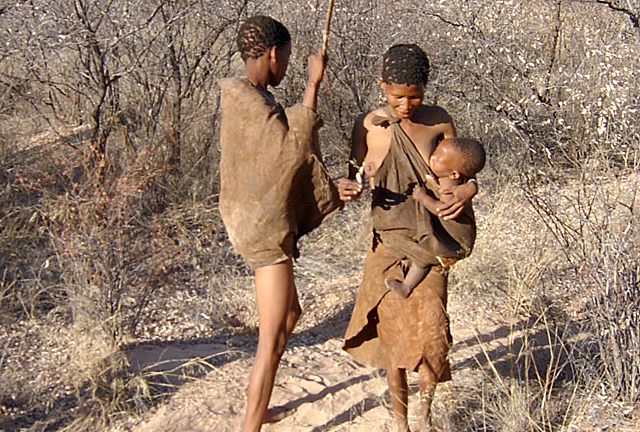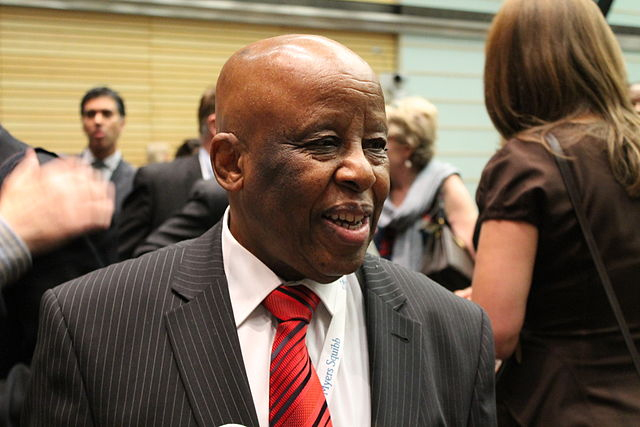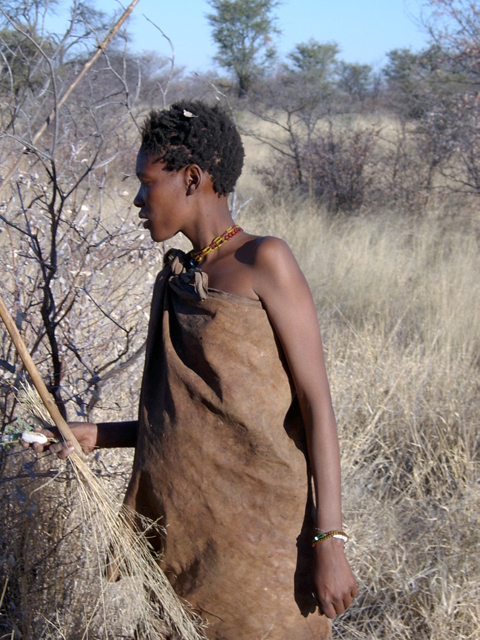Some of the G/wi and G//ana San people who were expelled from the Central Kalahari Game Reserve (CKGR) in Botswana have since returned to their ancestral desert in order to be themselves. Hunting and gathering as they have always done defines who they are, they feel, so it is hard for them to stop, despite the fact that the government has outlawed hunting in the huge reserve. They can’t stop, they told a correspondent from the U.S. television network PBS in a broadcast on its NewsHour show last Tuesday.

Special correspondent for PBS Martin Seemungal was told by a San man named Tolme Etata, “hunting and gathering is part of us.” They still hunt in the old way, with spears, bows and arrows. Most of the San people were forced to leave their desert homes by the government—to protect the wildlife, officials claimed—and resettled in new communities such as New Xade, located just outside the reserve. But the forced evictions conveniently removed them from any proximity to the diamonds that were discovered in the CKGR in the 1980s.
Mohulude Moete told Mr. Seemungal exactly how they were evicted. The soldiers and military police came into their village and said that either they get into the truck right now or they will be killed. The military people dumped their containers of water on the ground. “We had no options, so we had to go along with them or be shot,” he said. The women also revisited their memories of the soldiers destroying their homes and sealing up their wells. Botswana officials denied that there was any connection between the forced removals of the San people and the discovery of diamonds.

The video showed a clip of a brief interview with the former president of Botswana, Festus Mogae, who was responsible for many of the government’s repressive measures against the San. He was unrepentant: the San would not be allowed to return to their homes in the CKGR. The reporter then spoke with Onjustice Xothelo, who described the efficacy of the traditional desert huts, which could be built in two days and would last for ten years. The grass thatched roofs were completely waterproof, he said.
The report shifted focus to New Xade. It may have a school, a health clinic, and good roads, but the residents have erected traditional huts among the small houses built for them by the government, as reminders of what they used to have. New Xade lacks jobs for the residents. A man said that he is looking for work, he is dying of hunger, and he has nothing to do. But the program focused on the local bar, outside of which is a pile of beer cans. The bar in New Xade is clearly busy; alcoholism is rampant.

The reporter talked with Mosetayani Matsipane, a leader in the small settlement of Mothomelo in the CKGR. He said he was present for the ruling by the judges in the High Court decision of 2006, which acknowledged the rights of the San and ordered the government to allow them to return to their homes. He is glad to be out of New Xade now and back in Mothomelo, but he does not believe that the attitude of the government has changed.
He told the reporter than he is constantly under pressure to get out. “The government has been doing the same thing as before. But I would rather they take my dead body. I won’t go back.” His wife, Hakanyaziwe, agreed—she is happy in their ancestral village. “What’s important to me is the fruit of the land in Kalahari,” she said. It is such a contrast to New Xade, where everyone just focuses on money and where people have to steal to survive.
Mr. Seemungal interviewed Maitseo Bolaane, a professor at the University of Botswana and the director of its San Research Center. She argued that the San should be considered as an important resource for the health of the Kalahari. With their ideas, she said, the San “can contribute their knowledge system in the utilization of the resources.”